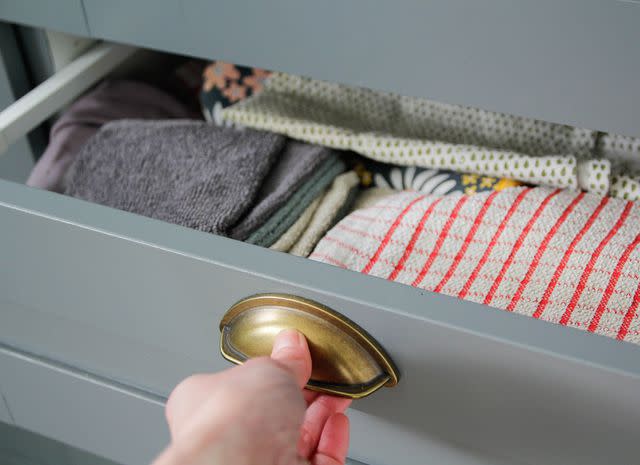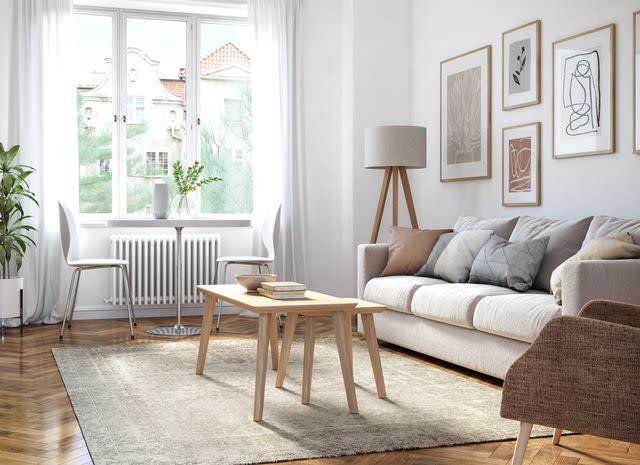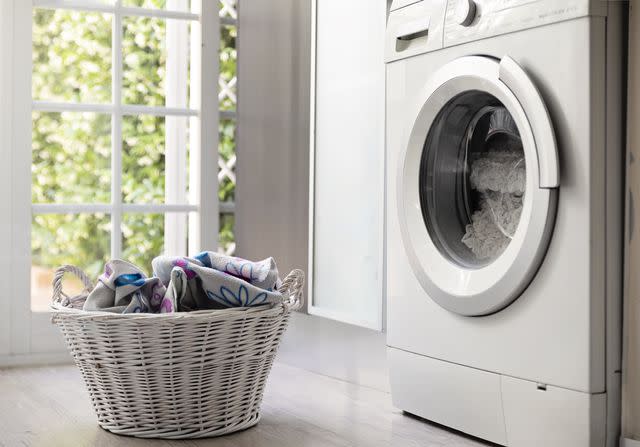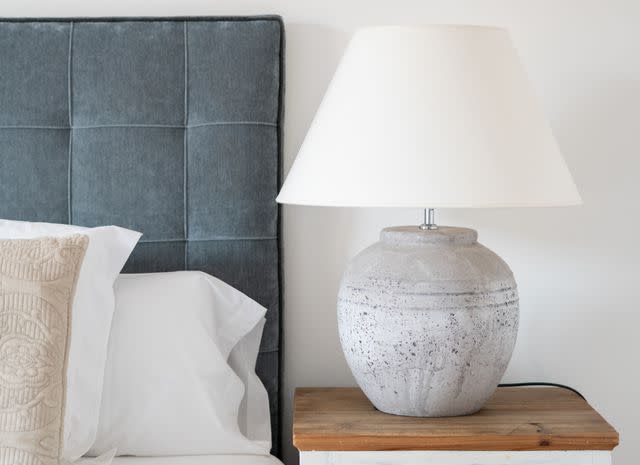11 Five-Minute Fixes You Can Do Around the House, From a Stuck Drawer to Crooked Wall Art
These quick solutions will help you check a few things off your home to-do list.
Sometimes, it feels like there's a never-ending list of things to fix around the house. While some of those to-dos require more immediate attention, others are simply annoyances that can be put off for the foreseeable future. But if your list of minor issues is growing, it's likely time to check a few off your list. Luckily, many common home inconveniences—like fixing a stuck drawer or straightening crooked wall art—can be resolved in just five minutes.
Meet the Expert
Jeff Palla, president of Mr. Handyman, a Neighborly company
Brian Shaunfield, store manager at Lowe's

Kinga Krzeminska / Getty Images
Stuck Drawers
Be it in a dresser or kitchen cabinet, few things are more annoying than a drawer that gets stuck when you try to open or close it. For a quick fix, follow these steps from Brian Shaunfield, store manager at Lowe's.
Pull the drawer out as far as it will go. (If you can't do this, nudge the drawer back on its glides with a putty knife).
Examine the glides. If they're bent or misshapen, use pliers to reshape them until they’re flat and straight.
If the glides aren't crooked, clean the tracks to remove anything that might be causing the drawer to stick.
Apply lubricant and move the drawer back and forth to allow the lubricant to work its way into the mechanism.
Squeaky Doors
If you're tired of hearing your doors creak when you open them, it's likely that the hinges just need to be lubricated, says Jeff Palla, President of Mr. Handyman, a Neighborly company.
Identify which hinge(s) is squeaking or making noise.
Apply a lubricant (like WD-40) to the hinge(s).
Open and close the door a few times to transfer the lubricant into the hinge.

CreativaStudio / Getty Images
Area Rugs That Won't Stay in Place
A rug pad is the best way to fix an area rug that won't stay put. "This pad lies underneath your rug and helps secure it to hard floors, so it won't shift out of place or bunch up when walked on," says Shaunfield. Rug pads also help preserve the life of your rug by preventing it from having direct contact with the floor.
Clear the area of any furniture or objects on top of the rug.
Clean the floor and the rug's underside.
Place a non-slip pad evenly across the underside of the rug. Align the corners of the pad with the corners of the rug so they're flush.
Press down firmly to make sure the pad adheres securely to both the rug and the floor.
Doors That Won't Close
To fix a door that won't close, you need to first identify the issue. "Check the door hinges for loose screws or snags, check door latches if you’re hearing grinding, and check door jambs if the upper or lower corners of the door are getting stuck or scratched when you try to shut it," says Shaunfield.
Door hinges: If it’s the door hinge, use a screwdriver to tighten any loose screws. If the screws turn without tightening, you might need to use longer screws (which can help with snagging doors, too).
Latch won't lock: If a latch won’t lock in place with the strike plate, try using a metal file or an electric planer to scrape the strike plate hole’s edge until it becomes large enough to fit the latch.
Door corners are stuck: If the upper or lower corners of your door are getting stuck, use sandpaper or an electric planer to trim down the sides of the jamb that are preventing your door from fully shutting.

DANA GALLAGHER
Crooked Wall Art
Crooked wall art can take away from the overall aesthetic of your space. Keep your pictures straight by applying adhesive putty to the back of each frame, says Palla.
Remove the picture from the wall and set it aside.
Clean the wall and back of the frame.
Apply adhesive putty to the corners of the frame.
Carefully reposition the picture on the wall, making sure it’s straight.
Press down on each area with the adhesive to secure the picture in place.
Stuck Doors
To fix a stuck door, you must sand down the area that is causing the problem then seal it with varnish. "The varnish protects the edge and prevents the wood from absorbing moisture and swelling during humid weather," says Shaunfield.
Place a sheet of carbon paper over the area with the inky side facing the door. Carefully shut the door. The ink will transfer to the door and show you the places that need to be sanded.
Remove the door if necessary (especially if it's sticking at the bottom).
Use a sander to carefully sand the problem area, extending where you sand well past the area that is binding.
Wipe the door clean of debris.
Seal the door edge by applying several thin coats of varnish or paint to match the original finish.
Let the varnish dry thoroughly before rehanging the door.
Related: The Right Way to Clean Window and Door Tracks

Cris Cantón/Getty Images
A Drifting Washing Machine
If your washing machine drifts every time you do a load, keep it in place by fixing any legs that aren't level.
Use a carpenter's level to check whether the machine is level side-to-side and front-to-back.
Place the level along all four edges of the appliance to determine which leg or legs need to be adjusted.
Working with a partner, slide the washing machine about 1 foot away from the wall. Be careful not to strain any cords or hoses.
Tip the washer and place a block of wood under the corner for support. Use a wrench or pliers to adjust the foot.
Repeat on any other feet that need to be adjusted.
After adjusting all feet, remove the block entirely and check to see if the washer is level.
Run a test load of laundry. If the washer stays in place, the machine is now level.
Once the load is finished and the washer has been leveled, slide the washer back into position.
Stuck Window Sliders
If you're dealing with a stuck window slider, it's possible your window roller needs to be replaced. But you can try to quickly remedy the issue by following these steps from Shaunfield.
Remove the sliding window sash so you can access the sliding window roller. (Most can be removed by lifting the sash upwards and tilting the bottom out.)
Once removed, clean the sliding window track using a hand-held vacuum to remove dirt and debris.
Wipe any sticky spots with a cloth dipped in soapy water. Wipe dry.
Once the track is cleaned, attempt to slide the window roller back and forth. If it moves without problems, you can reassemble the window. If not, you may need to replace your window roller.
Cabinet Doors That Won't Close
Cabinet doors that won't close are typically caused by loose screws. "A loose screw can cause misalignment and prevent the door from closing properly," says Palla.
Open the cabinet door to access the hinges and screws.
Examine the hinges to see if there are any loose screws.
Using the appropriate screwdriver, tighten any loose screws on the hinges. Pay attention to both the screws on the door side and the screws on the cabinet frame side.
If tightening the screws doesn't solve the issue, you may need to make small adjustments to the position of the hinges. Loosen the screws slightly, reposition the hinge, and then tighten the screws again.
Inspect the area around the hinges for any obstructions that might be preventing the door from closing fully.
Remove any items that might be blocking the door's movement.
Close the cabinet door and check if it now closes properly. If not, you may need to make further adjustments or inspect the hinges for any damage.

Ada Mazurek / Getty Images
Lampshades That Won't Stay Straight
All you need to fix a lampshade that won't stay straight is some electrical tape.
Remove the lampshade and lightbulb from the socket.
Cut a small piece of electrical tape and wrap it around one side of the lampshade ring. Repeat this process until all segments of the lampshade have been covered in electrical tape.
Place the lampshade back on the lamp post.
If it’s too tight, remove some of the tape. If it’s too loose, add more.
Re-screw in the lightbulb and enjoy your leveled lampshade.
Doors That Slam
The number one cause of doors slamming too hard is loose hinges, which is often a quick fix, says Shaunfield.
Use a screwdriver to tighten the screws that hold the hinges in place.
If this doesn't work, place felt pads or foam strips on the door frame to help cushion the blow when the door is shut.
Loose Drawer Pulls
Adding washers under the head of loose drawer knobs can help tighten them. "Choose washers with holes that can accommodate the width of the screw thread—the washer for a standard-sized knob screw is about a 1/2-inch wide," says Shaunfield.
Remove the drawer knobs or pulls.
Place a washer under the head to distribute the load.
Re-instill the drawer knobs or pulls, making sure they're really tight.
Read the original article on Martha Stewart.

